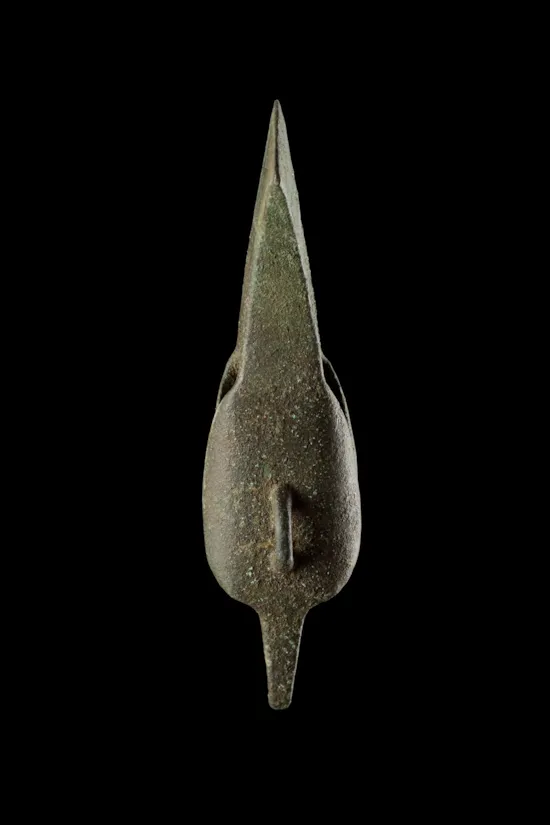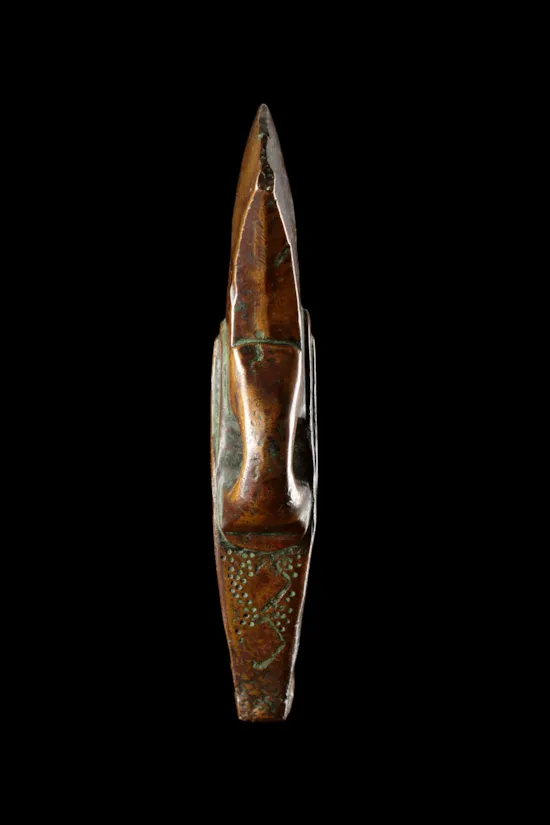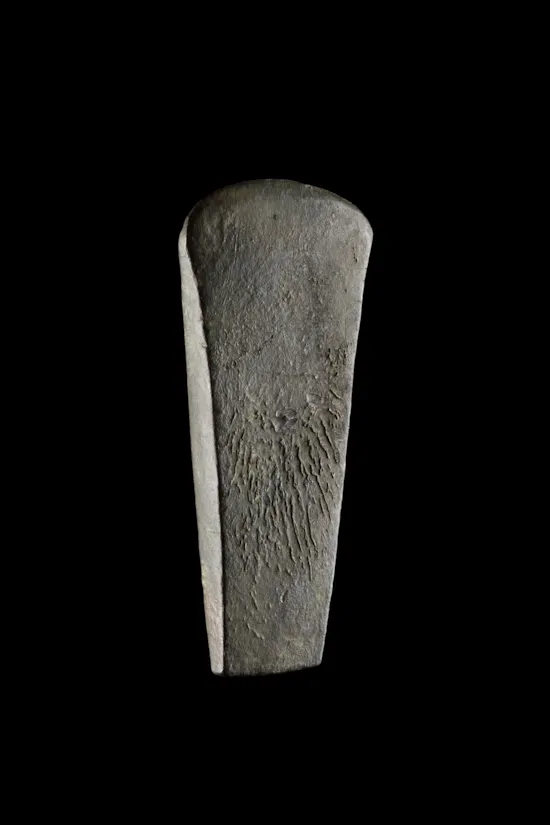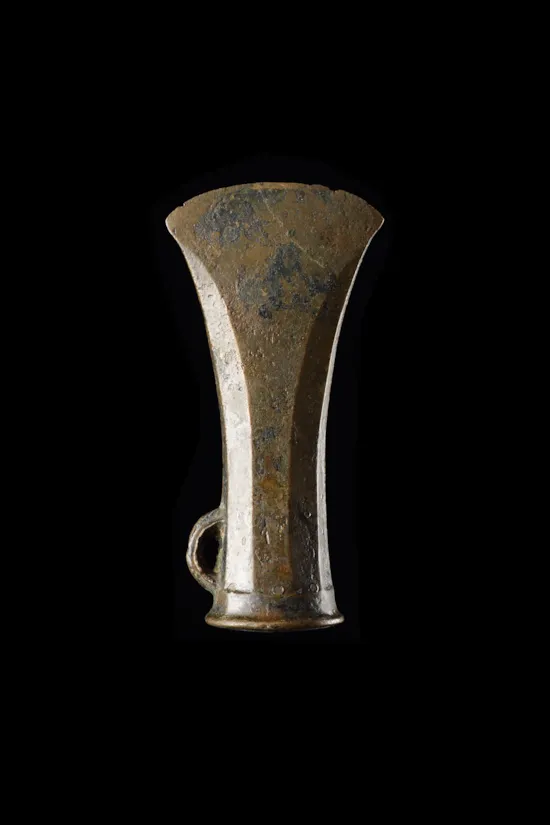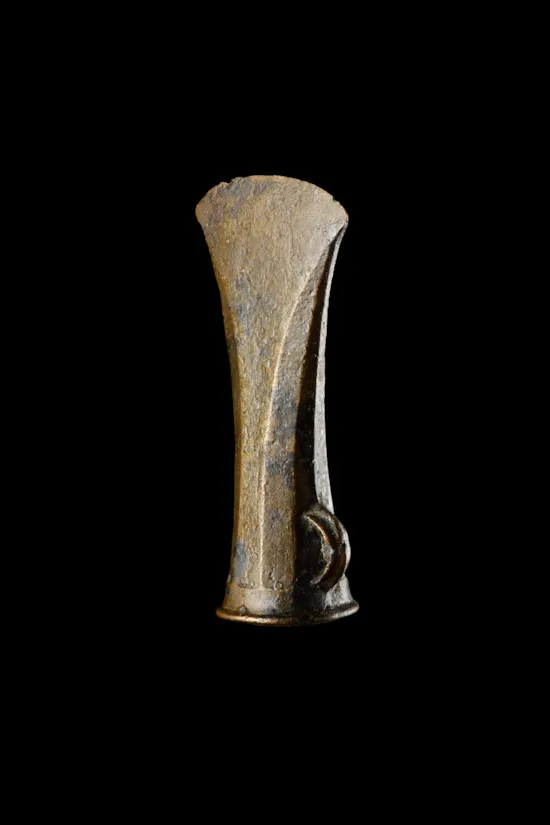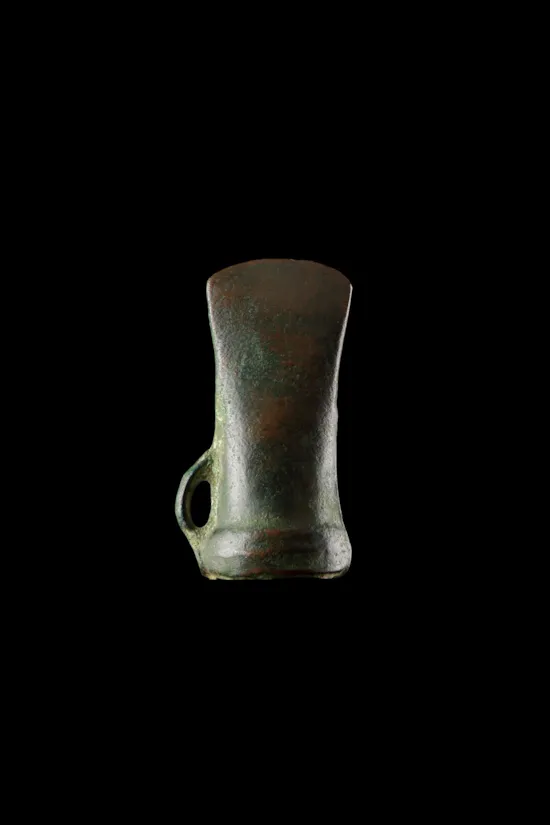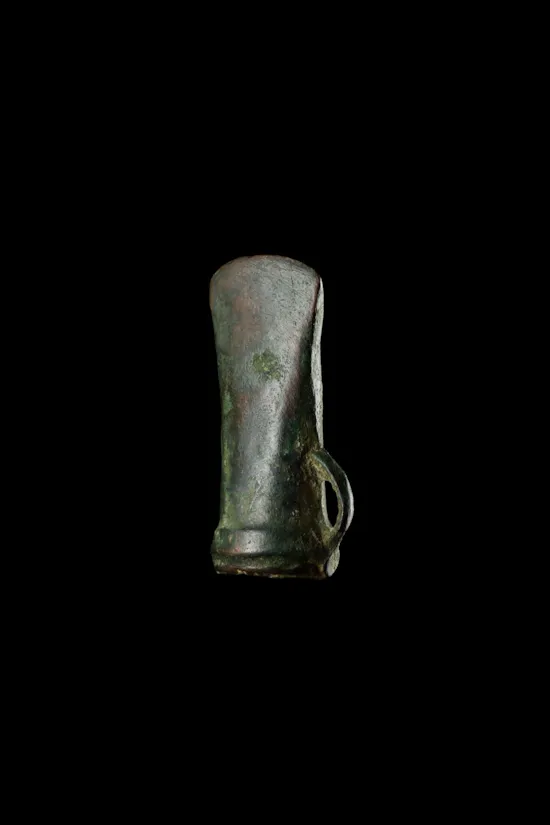Five Ancient British Bronze Age Axe Heads
A Collection of Five Ancient British Bronze Age Axe Heads Illustrating Their Development
A. Early Bronze Age flat axe head
B. Early Bronze Age double socketed flanged axe with loop, label reading: ‘Unusual Type Traces of Limestone from a Cave Dorset Traces of Silver Stone Flakes Prob. Burial Goods’ 1800 BC
C. Rare Middle Bronze Age Heavy Palstave Type Axe head with high copper content circa 1000 BC
D. Late Bronze Age Round Socketed Axe Head with label ‘Round Socketed Late Bronze Age Axe with Loop circa 700 BC Found on the Old Ford Brentford 1970 Rare Type’ circa 700 - 600 BC
E. Late Bronze Age Oval Socketed Axe circa 650 BC
Sizes: min: 8cm long - 3 ins long / max: 15.5cm long - 6 ins long
A. Early Bronze Age flat axe head
B. Early Bronze Age double socketed flanged axe with loop, label reading: ‘Unusual Type Traces of Limestone from a Cave Dorset Traces of Silver Stone Flakes Prob. Burial Goods’ 1800 BC
C. Rare Middle Bronze Age Heavy Palstave Type Axe head with high copper content circa 1000 BC
D. Late Bronze Age Round Socketed Axe Head with label ‘Round Socketed Late Bronze Age Axe with Loop circa 700 BC Found on the Old Ford Brentford 1970 Rare Type’ circa 700 - 600 BC
E. Late Bronze Age Oval Socketed Axe circa 650 BC
Sizes: min: 8cm long - 3 ins long / max: 15.5cm long - 6 ins long
Much of what we know about Bronze Age metallurgy comes from the finds of bronze hoards, usually of tools such as axe heads, but sometimes of weapons, which were left buried in the ground presumably for later recovery. Bronze axe heads and swords were also buried with the dead, and importantly acted as votive offerings to the gods, whose world probably mirrored that of the living. Success was measured by Bronze Age society in the quantities of desirable materials and of objects available for their disposal. Bronze acted as a material of prime value, a ‘proto currency’, not in standardised units, but somewhat like the ‘family silver’ which can be used for elegant display and also exchanged for everyday necessities when times are hard.
Five Ancient British Bronze Age Axe Heads

SOLD

